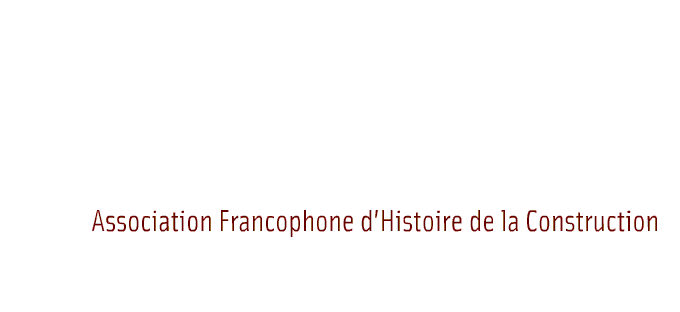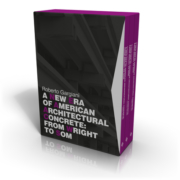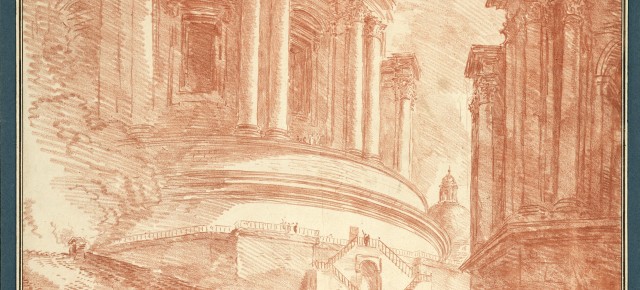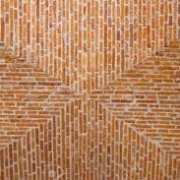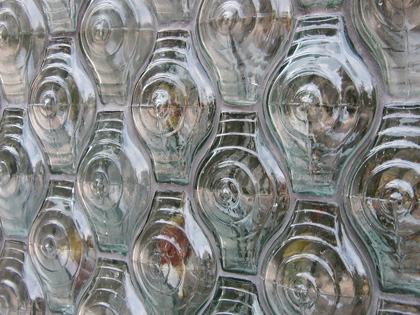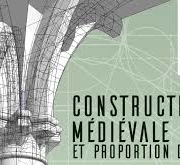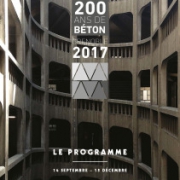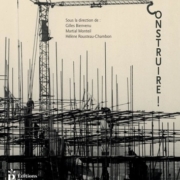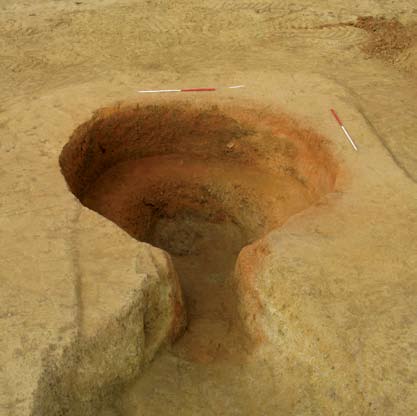Offre de thèse : Le plomb dans la construction monumentale
Offre de thèse à pourvoir à l’Université Paris 8 / ArScAn CNRS UMR 7041
Le plomb dans la construction monumentale : usages, pratiques, approvisionnements (XIIe-XIXe siècles)
Informations générales
Référence : Université Paris 8 Vincennes-Saint-Denis – ArScAn UMR7041
Lieu de travail : Paris
Date de publication : xxxx
Nom du responsable scientifique : Catherine Verna, Maxime L’Héritier, Sandrine Baron (co-direction TRACES)
Type de contrat : CDD Doctorant/Contrat doctoral
Durée du contrat : 36 mois
Financement : MITI du CNRS – chantier scientifique « Notre-Dame »
Date de début de la thèse : 1er novembre 2020
Descriptif du sujet de thèse
Contexte général de la recherche
Le plomb est un matériau largement méconnu, notamment dans le domaine de la construction, même pour des édifices majeurs où il est employé par centaines de tonnes, comme scellement, pour la couverture ou le décor. La production de ce métal et son approvisionnement des grands chantiers de construction sont liés à des enjeux politiques et économiques aujourd’hui encore peu explorés en histoire comme en archéologie.
Ce projet vise à retracer l’histoire du plomb à partir de ses usages dans la construction entre le XIIe et le XIXe siècle tout en mettant en lumière le rôle de ce matériau dans notre paysage patrimonial : ses provenances et sa fourniture, son recyclage, ses techniques de mise en forme et les transferts de compétences et de savoirs induits. Cette enquête diachronique rayonnera à partir de la cathédrale Notre-Dame de Paris dont le mobilier collecté après le sinistre ouvre de nouvelles perspectives de recherche. Elle sera entreprise selon une approche comparative avec d’autres bâtiments, visant à une compréhension globale des phénomènes relevant de la culture matérielle. Elle aboutira, entre autres, et pour la première fois, à la constitution d’un référentiel diachronique des plombs de construction en
France entre les XIIe et XIXe siècles.
Résumé du travail de thèse
La recherche qui sera conduite dans le cadre de ce contrat doctoral est pleinement interdisciplinaire, comme en atteste la codirection de thèse entre les universités et laboratoires de Paris 8 Vincennes- Saint-Denis/ArScAn (porteurs de la thèse) et Toulouse/TRACES et le cadre fourni par le chantier scientifique « Notre-Dame » CNRS/Ministère de la Culture dans lequel ces travaux s’inscriront. Le rôle du doctorant ou de la doctorante consistera à construire un référentiel des plombs de construction collectés à Notre-Dame de Paris et dans d’autres bâtiments. Si la démarche envisagée est dans un premier temps archéologique, le corpus d’études sera élargi aux sources écrites (essentiellement comptables) afin de construire une réflexion historique sur les usages et la circulation du plomb aux époques médiévales et modernes à partir d’une pratique de l’interdisciplinarité.
Le premier objectif de la thèse sera de réaliser un inventaire archéologique des plombs utilisés dans la construction du XIIe au XIXe siècle. Cet inventaire s’appuiera sur la réalisation d’une vaste prospection sur un ensemble de monuments médiévaux et modernes, déjà partiellement sélectionnés, mais dont le périmètre sera à affiner et à compléter avec le doctorant ou la doctorante. L’expertise du pôle métal du LRMH, partenaire du projet, sera sollicitée à ce stade.
Le second objectif de la thèse consistera à rassembler un corpus de textes (manuscrits ou édités) consacrés à l’approvisionnement, à l’usage et au travail du plomb, dans les monuments étudiés. Cette documentation concernera à la fois la construction et les restaurations des édifices. Son exploitation, par le doctorant ou la doctorante, permettra d’aborder les grands domaines de l’histoire des techniques et de l’histoire économique (sur le temps long) avec une attention particulière portée aux acteurs et à l’évolution de leurs pratiques au fil des siècles. Les données acquises viendront compléter le référentiel.
Le troisième objectif de la thèse portera sur le volant archéométrique du projet avec la conduite d’analyses élémentaires et isotopiques sur les plombs de construction afin de caractériser les différentes sources du plomb mobilisées dans la construction et leur évolution au fil du temps. Ces
analyses seront réalisées au sein des laboratoires partenaires : à l’IRAMAT-CEB, à Orléans (analyses en éléments traces par LA-ICP-MS) et à Toulouse (analyses isotopiques par MC-ICP-MS). Grâce à l’expertise historique et archéologique acquise, le doctorant ou la doctorante contribuera à
sélectionner les artefacts pertinents au sein du référentiel. Il ou elle coordonnera les campagnes de prélèvements et d’analyses de plomb in situ (LIBS, XRF) en collaboration avec les chercheurs du GT Métal du chantier Notre-Dame, spécialistes dans l’analyse des matériaux. Il ou elle participera enfin aux analyses en laboratoire conduites par les chercheurs.
Tout en étant au fait de la portée et des limites des résultats issus de l’analyse élémentaire et isotopique, le doctorant ou la doctorante devra porter l’effort interprétatif sur le croisement des données issues à la fois de l’archéologie, des sources écrites et des analyses géochimiques, afin de cerner les implications et les enjeux historiques de l’usage et de l’approvisionnement du plomb sur les chantiers de construction.
Profil du candidat ou de la candidate
Le doctorant ou la doctorante devra être titulaire d’un Master Recherche en Archéologie, en Histoire, en Histoire de l’art médiéval ou dans un domaine portant sur les Archéomatériaux et le Patrimoine. De solides connaissances en archéologie médiévale sont attendues, en particulier en archéologie du bâti, ainsi que des expériences de recherche sur les matériaux anciens (prospections, inventaires, études typologiques voire analyses chimiques). Une connaissance préalable du monde du patrimoine et de la construction ancienne serait également un atout. De même, seront nécessaires des connaissances ou des expériences dans le domaine de la lecture paléographie) et de l’étude des archives anciennes. La gestion des missions de terrain nécessaires à la constitution du référentiel nécessitera une grande autonomie de la part du doctorant ou de la doctorante qui devra faire preuve d’une capacité d’adaptation à différents contextes de travail (archives, terrain, laboratoire). Une grande ouverture d’esprit, de la curiosité et une forte motivation seront essentielles pour intégrer et associer les pratiques et raisonnements des diverses disciplines auxquelles il ou elle sera confronté(e) au cours de ses recherches.
Contexte de travail
Le projet de thèse se situant à l’interface entre archéologie/histoire des métaux et archéométrie, le doctorant ou la doctorante sera associé(e) à deux équipes qui ont déjà l’expérience d’un travail collectif et interdisciplinaire : les laboratoires ARSCAN (UMR 7041) et TRACES (UMR 5608). Il ou elle sera en outre intégré(e) au GT Métal du chantier scientifique CNRS/MC Notre-Dame et participera à ses travaux.
L’ancrage archéologique et historique constituant le fondement du projet, le doctorant ou la doctorante sera inscrit(e) en thèse en Histoire à l’Université Paris 8 Vincennes – Saint-Denis (ED 31 Pratiques et théories du sens) au sein du laboratoire ArScAn (UMR7041), dont les équipes GAMA et THEMAM rassemblent plusieurs spécialistes de l’histoire et de l’archéologie des métaux, ainsi que de l’étude historique et archéologique des monuments médiévaux. Basé(e) en région parisienne, le candidat ou la candidate s’établira au centre de son territoire d’étude, dans le berceau de la construction gothique, ce qui facilitera les déplacements qu’il ou elle aura à effectuer dans le cadre de sa recherche, sur le terrain, dans les dépôts d’archives et en bibliothèque (Archives nationales, Archives départementales, Médiathèque de l’Architecture et du Patrimoine…).
Le laboratoire TRACES, qui assure la codirection de la thèse, héberge notamment l’équipe « METAL » (les Métaux : Économie et Techniques par l’Archéologie et le Laboratoire), qui se consacre à l’histoire et à l’archéologie des métaux dans la diachronie. Cette équipe dispose de compétences reconnues en archéologie minière et métallurgique via des recherches archéologiques et archéométriques menées notamment sur de grands districts miniers et métallurgiques. Elle constitue également un
environnement privilégié pour la caractérisation et l’analyse d’objets et d’échantillons, grâce à des conventions de partenariat signées avec d’autres laboratoires des sciences naturelles et physico-chimiques.
Le doctorant ou la doctorante sera donc dans un environnement éminemment interdisciplinaire propice à l’acquisition de connaissances en archéologie et en histoire des métaux, ainsi que sur le patrimoine du bâti médiéval.
Il ou elle participera aux actions du GT Métal CNRS/MC et bénéficiera de son appui scientifique et logistique. L’avancée en parallèle d’une autre thèse en chimie environnementale portant sur l’évaluation de la pollution au plomb des Monuments Historiques (projet MINHAPLOM, dir. Sophie Ayrault et Sandrine Baron), également intégrée au GT, constituera une source d’échanges, de collaborations et de stimulation entre les deux doctorants travaillant sur un objet d’étude commun.
L’encadrement de la thèse sera assuré par Catherine Verna et Maxime L’Héritier (Paris 8 – ARSCAN) et Sandrine Baron (CNRS TRACES).
Plus d’informations et dépôt des candidatures sur :
https://emploi.cnrs.fr/Offres/Doctorant/UMR7041-MAXLHE-002/Default.aspx
Contacts pour plus de détails :
Maxime L’Héritier
maxime.l_heritier@univ-paris8.fr
Catherine Verna
catherine.verna@univ-paris8.fr
Sandrine Baron
sbaron@univ-tlse2.fr
Doctoral position to be held in Paris 8 University / ArScAn CNRS UMR 7041
Lead in monumental constructions: uses, practices, supply (12th-19th centuries)
General information
Reference: Université Paris 8 Vincennes-Saint-Denis – ArScAn UMR7041
Working place: Paris
Publication date: xxxx
Name of the scientific supervisors: Catherine Verna, Maxime L’Héritier, Sandrine Baron (co-direction TRACES)
Type of contract: CDD Doctorant/Contrat doctoral
Contract duration : 36 mois
Funding source : MITI du CNRS – chantier scientifique « Notre-Dame »
Start date of the position: 1er novembre 2020
Description of the PhD subject
General Research Context
Lead is a poorly documented material, especially in the ancient construction field, even for major buildings where hundreds of tons of lead are used, to seal stone and iron, for roofing or decoration.
The production of lead and its supply to major construction sites are linked to political and economic issues that are still little explored today in history and archaeology.
This project aims to look at the history of lead from its use in construction between the 12th and 19th centuries while highlighting the role of this material in our heritage landscape: its origins and supply, its recycling, its shaping techniques and the resulting transfer of skills and knowledge. This diachronic investigation will radiate from cathedral Notre-Dame de Paris, whose artefacts collected after the disaster open up new research perspectives. It will be undertaken according to a comparative approach with other buildings, aiming at a global understanding of material culture related phenomena. It will lead, among other things, and for the first time, to the constitution of a diachronic database of construction leads in France between the 12th and 19th centuries.
Summary of the PhD Work
The research that will be conducted during this doctoral contract is fully interdisciplinary, as shown by the PhD co-direction between the universities and laboratories of Paris 8 Vincennes-Saint-Denis/ArScAn (holding the PhD) and Toulouse/TRACES and the framework provided by the CNRS/Ministry of Culture Notre-Dame scientific project in which this work will take place. The role of the PhD student will be to build a reference system for construction leads collected at Notre-Dame de Paris and other buildings. The proposed approach is initially archaeological, however the study will be extended to written sources (mainly accounting) in order to build a historical reflection on the uses and circulation of lead in medieval and modern times based on an interdisciplinary approach.
The first objective of the thesis will be to carry out an archaeological inventory of lead elements used in construction from the 12th to the 19th century. It will be based on a large-scale investigation on a group of medieval and modern monuments, already partially selected, but whose perimeter will have to be refined and completed with the PhD student. The expertise of LRMH’s (Laboratoire de Recherche sur les Monuments Historiques) metal department, a partner in the project, will be sought at this stage.
The second objective of the thesis will be to gather a corpus of texts (manuscripts or edited) dealing with the supply, use and processing of lead in the studied monuments. This documentation will concern both the construction and the restoration of the buildings. Using this material, the PhD student will be able to approach the major fields of the history of techniques and economic history (over the long term) with particular attention paid to the actors and the evolution of their practices
over the centuries. The acquired data will complete the database.
The third objective of the thesis will focus on the archaeometric part of the project consisting in elemental and isotopic analyses on construction leads in order to characterize the different sources of lead used in construction and their evolution over time. These analyses will be carried out in the partner laboratories: at IRAMAT-CEB, in Orléans (trace element analyses by LA-ICP-MS) and in Toulouse (isotopic analyses by MC-ICP-MS). Thanks to the historical and archaeological expertise acquired, the PhD student will contribute to the selection of relevant artefacts within the repository.
He or she will coordinate on-site lead sampling and analysis campaigns (LIBS, XRF) in collaboration with the researchers of the metal workgroup of the Notre-Dame CNRS project, who are specialized in materials analysis. Finally, he or she will participate in the laboratory analyses conducted by the researchers.
While being aware of the scope and limitations of the results of elemental and isotopic analysis, the PhD student will have to focus the interpretation effort on the intersection of data from archaeology, written sources and geochemical analyses, to identify the implications and historical issues of lead use and supply on construction sites.
Applicant Profile
The doctoral student must hold a Research Master’s degree in Archaeology, History, History of Medieval Art or in a field related to Archaeomaterials and Heritage. Solid knowledge in medieval archaeology is expected, in particular in building archaeology, as well as research experience on
ancient materials (prospecting, inventories, typological studies and even chemical analyses). Prior knowledge in the field of heritage and ancient construction would also be an asset. Similarly, knowledge or experience in the field of reading (palaeography) or in the study of ancient archives will
be necessary. Managing the field missions in order to constitute the depository will require a great deal of autonomy on the part of the doctoral student, who will have to demonstrate a capacity to adapt to different working contexts (archives, field, laboratory). Open-mindedness, curiosity and strong motivation will be essential to integrate and associate the practices and reasoning of the various disciplines which the doctoral student will be confronted with in the course of his or her research.
Working Context
As the thesis project is situated at the intersection between archaeology/history of metals and archaeometry, the PhD student will be attached to two teams which already have experience of collective and interdisciplinary work: the ARSCAN (UMR 7041) and TRACES (UMR 5608) laboratories.
The PhD student will also be part of the Metal workgroup of the CNRS/MC Notre-Dame scientific project and will be involved in its work.
The archaeological and historical approach being the core of the project, the PhD student will be enrolled in a PhD in History at the University Paris 8 Vincennes – Saint-Denis (ED 31 Pratiques et théories du sens) within the ArScAn laboratory (UMR 7041), whose GAMA and THEMAM teams include
several specialists in the history and archaeology of metals, as well as in the historical and archaeological study of medieval monuments. Based in the Paris region, the candidate will be located in the centre of his or her study area, in the heart of Gothic construction, thus facilitating the trips that
he or she will have to make in the course of his or her research: in the field, in archive repositories and in libraries (National Archives, Departmental Archives, Médiathèque de l’Architecture et du Patrimoine in Charenton, etc.).
The TRACES laboratory, which ensures the co-direction of the thesis, houses in particular the ‘METAL’ team (Metals: Economics and Techniques through Archaeology and the Laboratory), which is dedicated to the history and archaeology of metals in diachrony. This team has recognised skills in mining and metallurgical archaeology through archaeological and archaeometric research carried out in particular on large mining and metallurgical districts. It is also a privileged environment for the characterization and analysis of objects and samples, thanks to partnership agreements signed with other laboratories in the natural and physico-chemical sciences.
The doctoral student will thus be in an eminently interdisciplinary environment favourable to the acquisition of knowledge in archaeology and the history of metals, as well as in medieval built heritage.
The doctoral student will be involved in the activities of the CNRS/MC Metal WG and will benefit from its scientific and logistical support. The parallel progress of another thesis in environmental chemistry on the evaluation of lead pollution in Historic Monuments (MINHAPLOM project, dir. Sophie Ayrault and Sandrine Baron), also integrated in the workgroup, will be a source of exchange, collaboration and stimulation between the two doctoral students working on a common subject of study.
The thesis will be supervised by Catherine Verna and Maxime L’Héritier (Paris 8 – ARSCAN) and Sandrine Baron (CNRS TRACES).
Candidates may apply on the CNRS website:
https://emploi.cnrs.fr/Offres/Doctorant/UMR7041-MAXLHE-002/Default.aspx?lang=EN
Contacts for more details:
Maxime L’Héritier
maxime.l_heritier@univ-paris8.fr
Catherine Verna
catherine.verna@univ-paris8.fr
Sandrine Baron
sbaron@univ-tlse2.fr
